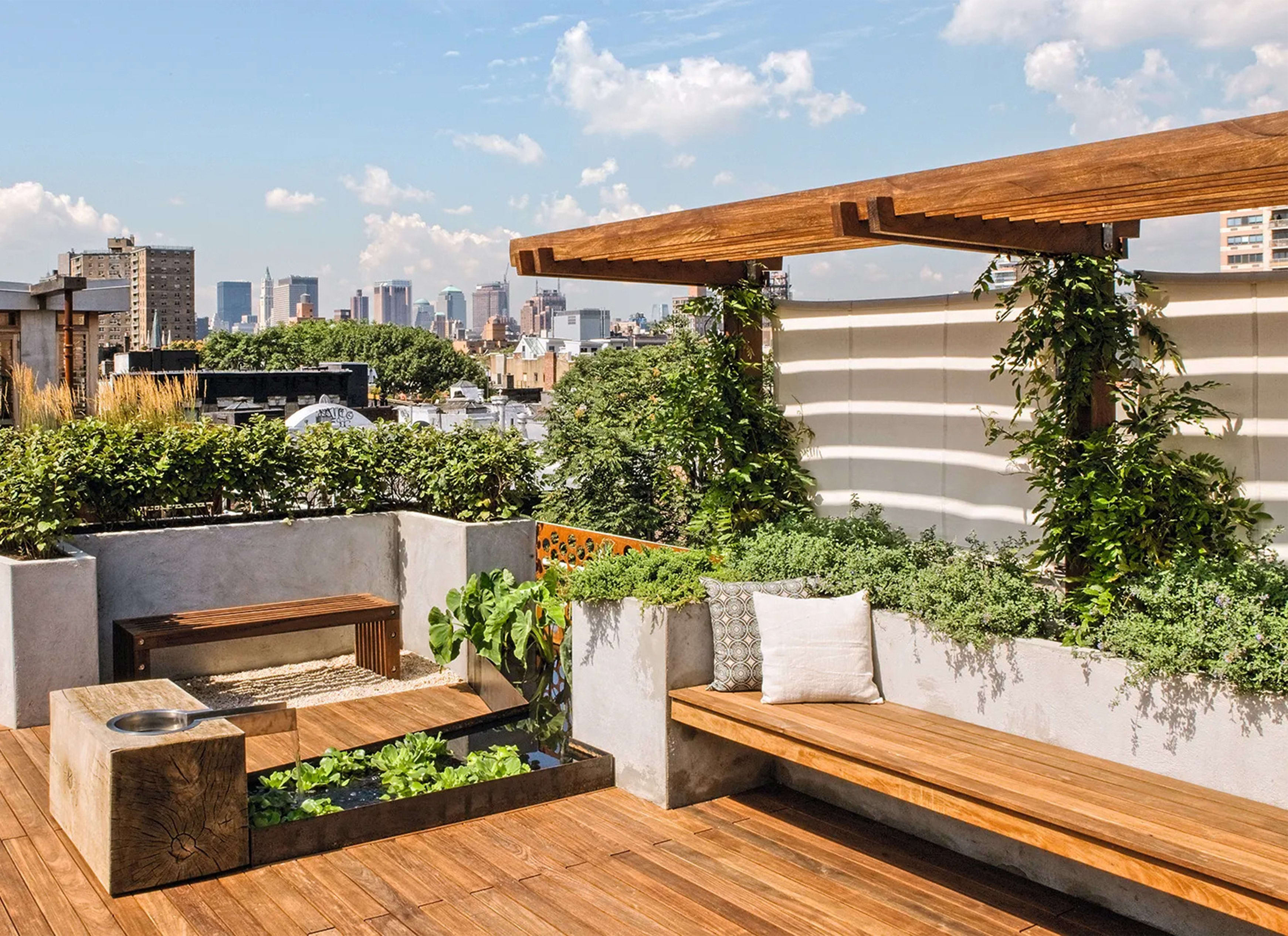
Rooftop Gardening in Bangladesh: Tips for a Thriving Urban Garden


Rooftop Gardening in Bangladesh: Tips for a Thriving Urban Garden

Creating a rooftop garden in urban areas like Dhaka, Bangladesh, offers a practical solution to combat the diminishing green spaces and provides a refreshing escape from the hustle and bustle of city life. With the growing trend of sustainable living and the need for environmental conservation, rooftop gardens are becoming increasingly popular in Bangladesh. This blog post will delve into the benefits, design considerations, and implementation strategies for rooftop gardens, tailored to the Bangladeshi context.
The Rising Trend of Rooftop Gardens in Bangladesh
In Bangladesh, the rapid urbanization has led to the loss of green spaces, resulting in environmental challenges such as air pollution, heat islands, and a decline in biodiversity. Rooftop gardens present a viable solution to these issues by transforming unused rooftop spaces into lush, green sanctuaries. The concept of rooftop gardens is not new, but it has gained significant momentum in recent years due to the growing awareness of environmental sustainability and the benefits of urban agriculture.
Benefits of Rooftop Gardens in Bangladesh
1. Environmental Benefits:
Air Quality Improvement: Rooftop gardens help in filtering pollutants and carbon dioxide from the air, leading to cleaner and fresher air in densely populated cities like Dhaka.
Temperature Regulation: Green roofs act as insulators, reducing the temperature inside buildings during hot summers and helping to conserve energy. This is particularly beneficial in Bangladesh, where high temperatures are a common challenge.
Stormwater Management: Rooftop gardens can absorb rainwater, reducing the risk of urban flooding, which is a frequent issue during the monsoon season in Bangladesh.
2. Economic Benefits:
Energy Savings: By providing insulation, rooftop gardens reduce the need for air conditioning in summer and heating in winter, leading to significant energy savings.
Increased Property Value: Properties with rooftop gardens tend to have higher market values due to their aesthetic appeal and the environmental benefits they offer.
Urban Agriculture: Rooftop gardens can be used for growing fruits, vegetables, and herbs, promoting urban agriculture and providing a source of fresh produce for the residents.
3. Social and Health Benefits:
Stress Reduction: Green spaces are known to have a calming effect, reducing stress and anxiety. A rooftop garden provides a tranquil space for relaxation and recreation.
Community Engagement: Rooftop gardens can serve as communal spaces where residents can come together, fostering a sense of community.
Health Improvement: The availability of fresh produce from rooftop gardens encourages healthier eating habits, contributing to the overall well-being of urban residents.
Design Considerations for Rooftop Gardens in Bangladesh
When planning a rooftop garden in Bangladesh, several factors need to be considered to ensure the garden's success and sustainability.
1. Structural Assessment:
It is crucial to assess the structural integrity of the building before installing a rooftop garden. The roof must be able to support the additional weight of soil, plants, and any other garden features.
Consulting with a structural engineer is recommended to determine the load-bearing capacity of the roof.
2. Waterproofing and Drainage:
Proper waterproofing is essential to prevent water leakage, which could damage the building structure. A reliable waterproofing membrane should be installed before adding any soil or plants.
Efficient drainage systems are also necessary to prevent water accumulation, which could lead to root rot or other plant diseases.
3. Soil and Plant Selection:
The choice of soil and plants is critical for the success of a rooftop garden. Lightweight, well-draining soil mixes are ideal for rooftop gardens.
Selecting native plants that are well-suited to the local climate will ensure that the garden thrives with minimal maintenance.
4. Irrigation:
An efficient irrigation system is essential for maintaining a rooftop garden, especially during the dry season. Drip irrigation systems are often recommended as they provide consistent moisture while conserving water.
5. Sunlight and wind exposure:
Rooftop gardens are exposed to more sunlight and wind than ground-level gardens, so it's important to choose plants that can withstand these conditions.
Installing windbreaks or shade structures can help protect plants from harsh weather.
Implementation Strategies for Rooftop Gardens in Bangladesh
1. Planning and Design:
Start by defining the purpose of the rooftop garden—whether it's for leisure, food production, or enhancing biodiversity. This will guide the design and plant selection.
Consider creating a layout that includes different zones, such as seating areas, vegetable plots, and ornamental plant sections.
2. Sustainable Practices:
Incorporate sustainable practices such as composting, rainwater harvesting, and organic gardening methods to enhance the environmental benefits of the rooftop garden.Using recycled materials for planters and garden structures can further reduce the garden's environmental footprint.
3. Community Involvement:
Involve the community in the planning and maintenance of the rooftop garden. This not only reduces the workload but also fosters a sense of ownership and responsibility among the residents.
4. Maintenance:
Regular maintenance is key to keeping a rooftop garden healthy and vibrant. Tasks such as watering, pruning, fertilizing, and pest control should be performed consistently.
It may be beneficial to hire a professional gardener or enlist the help of local gardening enthusiasts to assist with maintenance.
Challenges and Solutions
1. High initial costs:
The initial cost of setting up a rooftop garden, including structural reinforcement, waterproofing, and plant materials, can be high. However, the long-term benefits, such as energy savings and increased property value, often outweigh the initial investment.
Consider starting small and expanding the garden over time to manage costs.
2. Climate Considerations:
The hot and humid climate of Bangladesh can pose challenges for rooftop gardening, such as excessive heat and humidity. Choosing heat-tolerant and drought-resistant plants can help mitigate these challenges.
3. Pests and Diseases:
Rooftop gardens, like any other garden, are susceptible to pests and diseases. Implementing integrated pest management (IPM) practices, such as using natural predators and organic pesticides, can help control these issues.
Conclusion
Rooftop gardens offer a practical and sustainable solution to the environmental challenges faced by urban areas in Bangladesh. By transforming unused rooftops into green spaces, residents can enjoy numerous benefits, including improved air quality, energy savings, and enhanced well-being. With careful planning, design, and maintenance, rooftop gardens can become a vital part of the urban landscape in Bangladesh, contributing to a healthier and more sustainable future.
The trend of rooftop gardens is not just a passing fad; it is a reflection of a growing awareness of the need to reconnect with nature, even in the most urbanized environments. For Bangladesh, a country facing rapid urbanization, rooftop gardens provide a way to balance development with environmental stewardship, ensuring that green spaces remain a part of the urban experience for generations to come.
